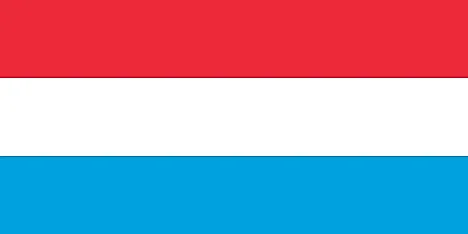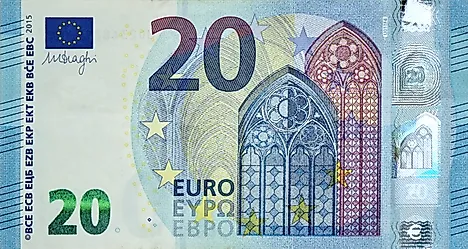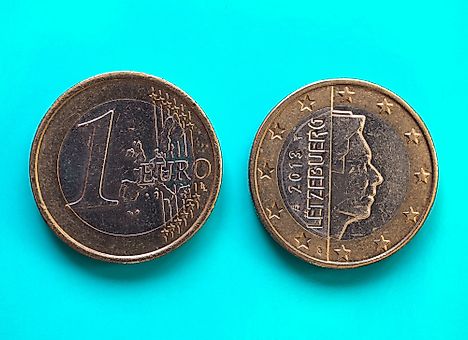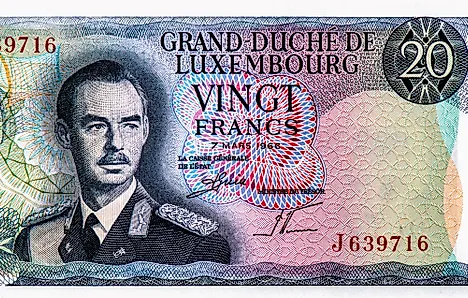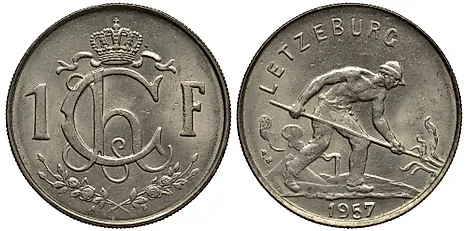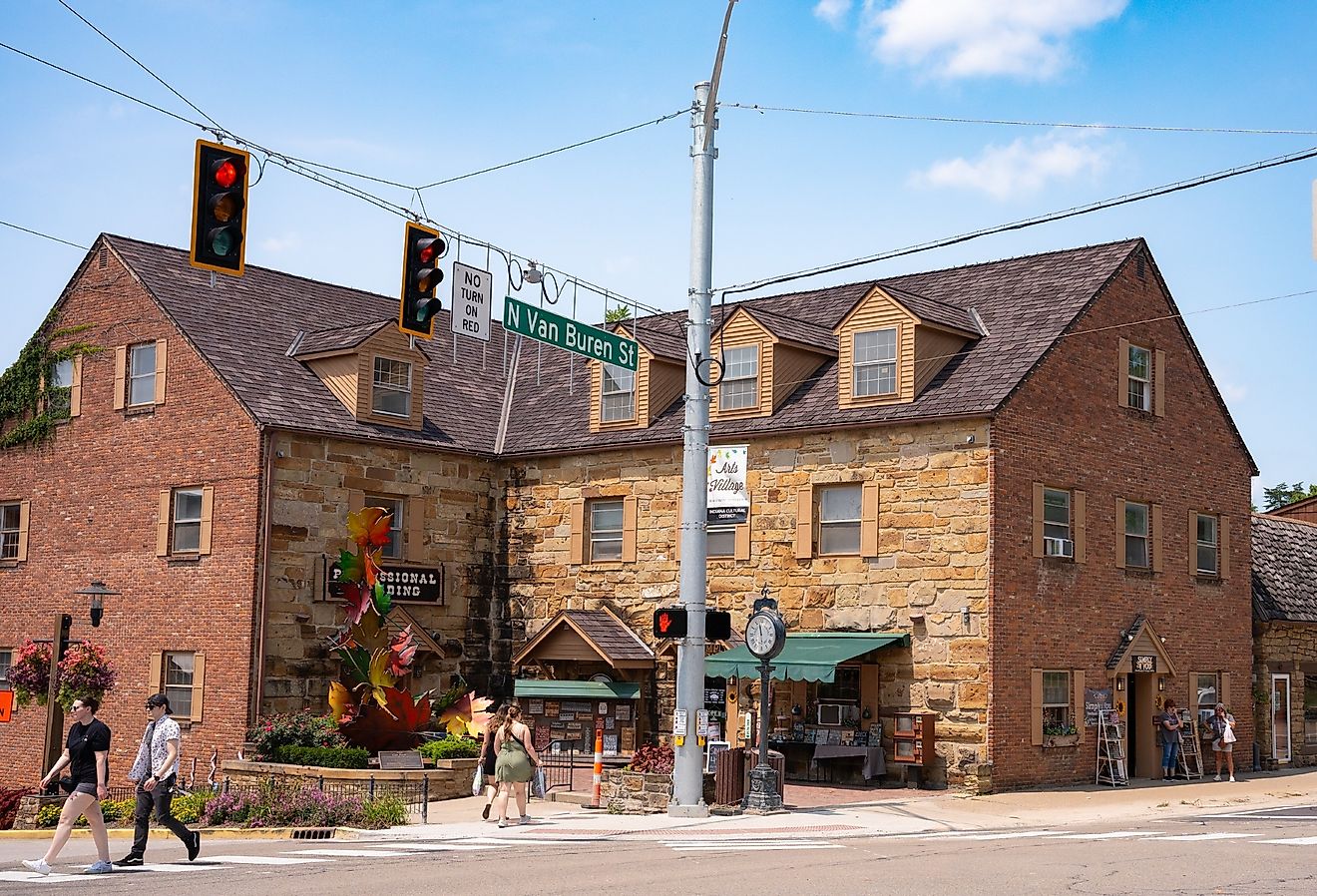Flags, Symbols, & Currencies of Luxembourg
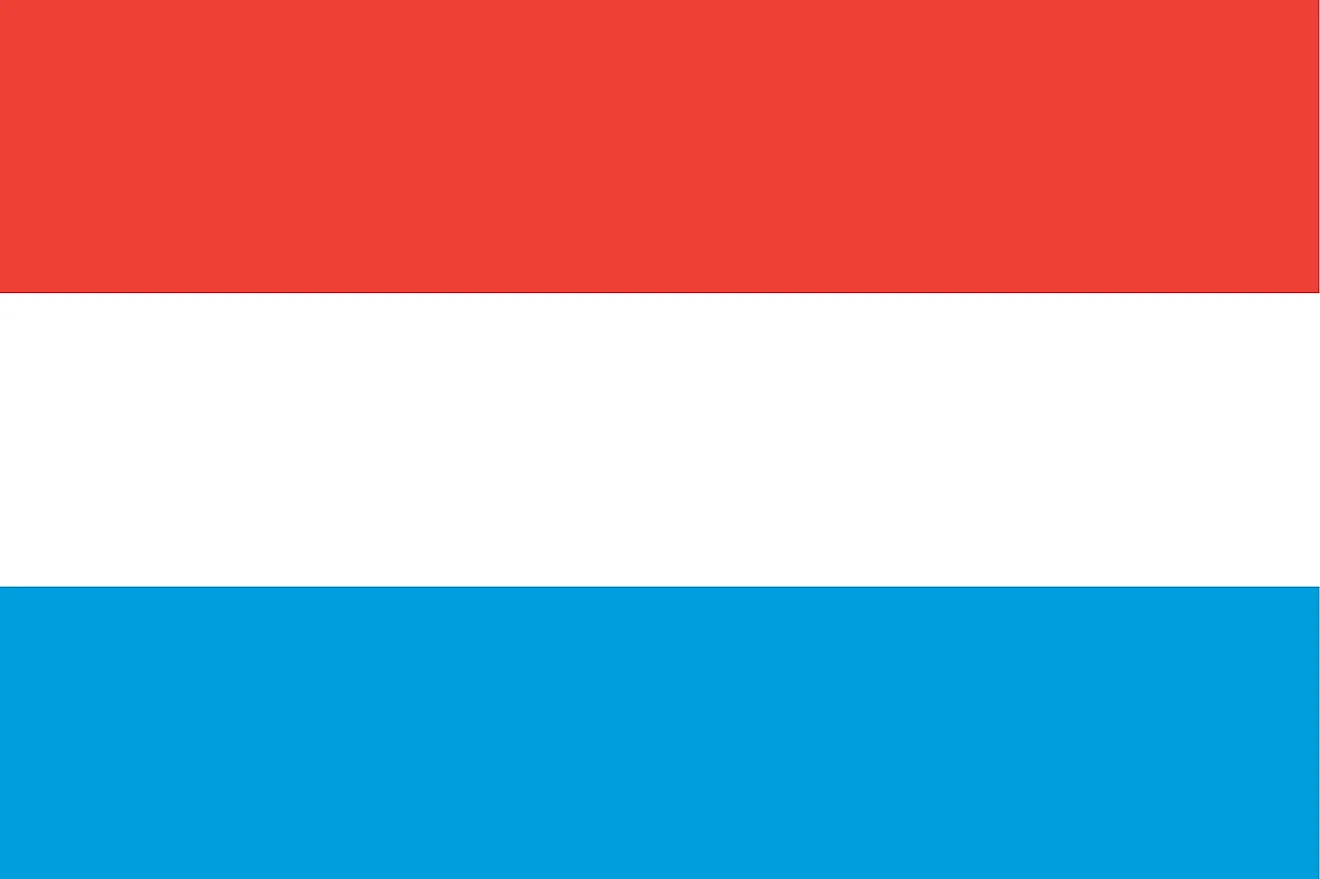
Luxembourg's flag was officially adopted in 1993, although it has been used since 1848. It is a tricolor with three horizontal bands of equal size: red (top), white (middle) and light blue (bottom). The flag’s design is nearly identical to that of the Netherlands flag, although the blue and red colors on Luxembourg's flag are lighter in shade. The colors on the flag trace their origin to the House of Luxembourg’s coat of arms.
The red, white, and blue colors of the flag of Luxembourg were first adopted in 1830 and may have been derived from the colors of the County of Luxembourg. The colors are often considered revolutionary colors since they were adopted during the Belgian Revolution. Red signifies vibrancy, revolution, and power. It also signifies determination and courage of the people. White in the middle signifies harmony, peace, and innocence of the Luxembourg people. The blue color at the bottom signifies the perseverance and determination.
History of the Flag
Luxembourg did not have a flag until 1830, when it adopted national colors that were first used during the Belgian Revolution. On June 12, 1845, the horizontal tricolor flag used today was first accepted but not officially adopted. The flag was officially adopted more than a century later in 1972, when a law regulating the flag was passed. Soon after its adoption, national debate arose regarding the flag's design, as it was nearly identical to the flag of the Netherlands. In 2006, a member of parliament proposed changing the design of the flag to reduce its resemblance of the Dutch flag, and suggested the use of a red lion ensign. However, the new design was not ultimately adopted and the flag of Luxembourg remains unchanged.
Symbols of Luxembourg
National Coat of Arms of Luxembourg

The coat of arms of Luxembourg originated from the Middle Ages. It is derived from the the Duchy of Limburg. The coat of arms contains two crowned lions supporting a blue and white striped shield, of which depicts a third, red lion rampant. Surrounding the shield and lions is a royal mantling, crowned with a heraldic royal crown.
National Anthem
- Anthem Title: Ons Heemecht ('Our Homeland')
- Music composer: Jean Antoine
- Lyricist: Michel Lentz
- Date of Adoption: Jean Antoine Zinnen
The national anthem of Luxembourg is Ons Heemecht ('Our Homeland'). It was written in 1859 by Michel Lentz and set to music in 1864 by Jean Antoine Zinnen. The anthem was performed publicly in June 1864 at Ettelbruck. Although the anthem has four verses, only the first and last verses were adopted as the official national anthem of Luxembourg in 1993
Ons Heemecht
Wou d'Uelzecht durech d'Wisen
zéit,
Duerch d'Fielsen d'Sauer brécht,
Wou d'Rief laanscht d'Musel
dofteg bléit,
Den Himmel Wäin ons mécht:
Dat as onst Land, fir dat mer géif
Hei nidden alles won,
Ons Heemechtsland dat mir so
déif
An onsen Hierzer dron.
Du do uewen, deen seng
Hand
Duerch d'Welt d'Natioune leet,
Behitt Du d'Lëtzebuerger Land
Vru friemem Joch a Leed;
Du hues ons all als Kanner
schon
De fräie Geescht jo ginn,
Looss viru blénken d'Fräiheetssonn,
Déi mir sou laang gesinn!
Our Homeland
Where the Alzette slowly flows,
The Sauer plays wild pranks,
Where fragrant vineyards
amply grow
On the Mosella's banks;
There lies the land for which
we would
Dare everything down here,
Our own, our native land which
ranks
Deeply in our hearts.
O Thou above whose powerful
hand
Makes States or lays them low,
Protect this Luxembourger land
From foreign yoke and woe.
Your spirit of liberty bestow
On us now as of yore.
Let Freedom's sun in glory
glow
For now and evermore.
The Currency of Luxembourg is the Euro
Luxembourg has the euro as its official and national currency just like the other countries within the eurozone that use the common European money. One euro is subdivided into 100 cents. The euro is denoted with the symbol € while its ISO 4217 code is EUR. Luxembourg’s constitution provides for the printing of euro banknotes and cent coins for use as legal tender in Luxembourg. The Luxembourg euro bill has a decimal consisting of 100 equal units. The euro currency used in Luxembourg is minted by the European Central Bank.
Luxembourg Euro Coins
Luxembourg has a motif for all its eight coins, just like Netherlands and Belgium coins. Luxembourg euro coins are minted in three different designs. However, all coins contain the profile of the Grand Duke Henri of Luxembourg. There are two different portrayals of the Duke on the eight sets of coins. One portrait for the coins in the denomination of 1, 2, and 5 cents and a different portrait for the rest of the coins. The coins also bear the year of issue and the word “Letzebuerg,” which is the local name for Luxembourg. The euro coins have 12 stars arranged in the form of a semi-circle. The 12 stars represent Europe. Additionally, the number “2” appears on the rim of the 2-euro coin followed by two stars so that the number appears six times together with 12 stars. Luxembourg does not mint its own coins. Most of the coins are minted by the Netherlands’ Koninklijke Nederlandse Munt, Mint of Finland, and Mint of Paris. Luxembourg euro coins are among the rarest in Europe, even within the country.
Banknotes
Luxembourg uses the euro banknotes used within the eurozone. The banknotes have been in circulation in Luxembourg since 2002. The seven denominations of Euro banknotes range from 5 to 500. The banknotes used in Luxembourg are identical in design to the banknotes used in other countries. They are made of pure cotton fiber and measure from 4.7 by 2.4 inches to 6.3 by 3.2 inches. The banknotes have several features including the signature of the president of the European Central Bank, a bridge, and the EU flag with 12 stars. The banknotes also have the name “euro” in three scripts: Latin, Greek, and Cyrillic script. The security features include the crisp paper, holograms, watermarks, security thread, and matted surface.
Historical Currencies of Luxembourg
Luxembourg's currency continues to play a critical role in the development of the country’s financial sector. The country had two sets of currencies between 1854 and 2017. The Luxembourgish franc was the first official currency to be used in Luxembourg. It was in circulation from 1854 to 1999. It was replaced by the euro in 2002. However, during the period between 1999 and 2002, the Luxembourgish franc was a subdivision of the euro, but the euro was not in circulation. During this period, the principle of “no obligation and no prohibition” applied where transactions could be completed in both euro and franc, but physical payment was restricted to the franc, as euro denominations were not yet in circulation. One euro was exchanged for approximately 40.40 francs.
